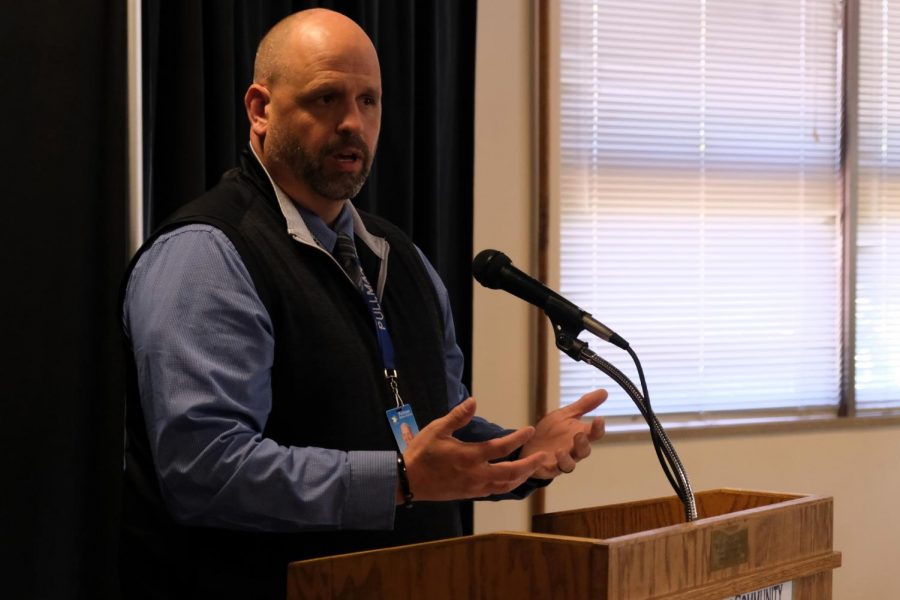Pullman High School to use concussion detecting sensors
Devices to be placed inside football helmets beginning in August
JACOB BERTRAM | THE DAILY EVERGREEN
Chris Franklin, Assistant Principal of Athletics and Activities at Pullman High School, speaks on how the donation from the Pullman Chamber of Commerce and Visitor Center Community Investment Fund will go towards outfitting student athletes with special sensors meant to gather data on concussions during a Chamber meeting Tuesday afternoon at the Gladish Community Center.
June 13, 2019
Pullman’s Community Investment Committee presented a $10,000 grant to Pullman Regional Hospital and Pullman High School to help fund health and safety initiatives Tuesday. This would be part of the Athlete Intelligence Cue Sensor program.
The grant will help fund concussion-sensing equipment for Pullman High School’s football and girls’ soccer players. Tony Poston, chair of the community investment fund, said PRH and PHS’s application fit perfectly into the 2040 initiative.
The Pullman’s community investment fund, which was created last year to monetize projects for the Pullman 2040 initiative, set aside $50,000 for initiatives that promote health, recreational environments and education, Poston said.
Chris Franklin, PHS assistant principal for student activities and athletics director, said student safety is one of their main concerns.
“You can find it anywhere — concussions are a bad story right now in college, high school and professional athletics,” Franklin said. “By getting this money, it allows us the opportunity to monitor our students a little bit better and create a safer environment for them and to determine if concussions are there.”
The committee is looking forward to working with Dr. Ed Tingstad, Franklin said.
Franklin said sensors will be placed in football helmets. Researchers are still developing a way to place sensors for soccer players. Last winter, researchers at Columbia University developed a wearable device that could be placed within football helmets and measure brain activity.
The device uses electroencephalography (EEG) sensors to analyze hit severity. When sensors detect a severe hit it instantly alerts athletic trainers via computers.
The NCAA also took steps to address the issue by requiring all universities to make their concussion management plan publicly available. WSU’s 2017 concussion safety protocol requires student-athletes to have a pre-participation neuropsychology baseline assessment before participating in a sport.
When a concussion is suspected, removal from the competition and an evaluation is mandatory, according to the protocol. The evaluation consists of a symptom assessment, physical and neurological exam, cognitive assessment and a balance exam. Athletic trainers also look for cervical spine trauma, skull fracture and intracranial bleed.
A SCAT 3, a standardized checklist for concussions, is also mandatory and expected to be done as soon as possible. The team physician can then approve student-athletes to return to play.
Organization and funding for the sensors are still in development but are expected to be used at PHS in August.



















